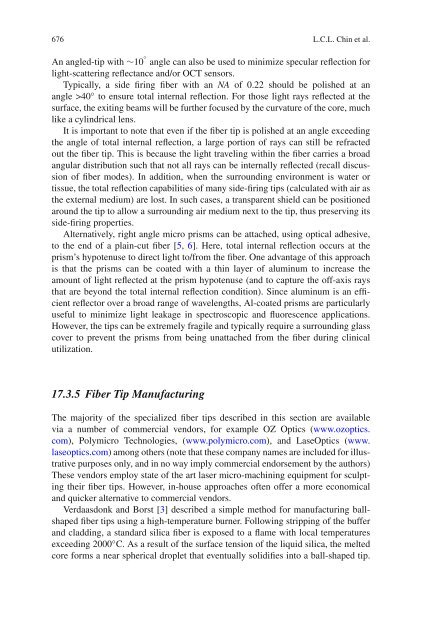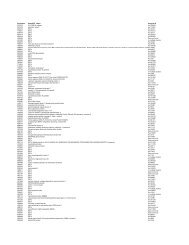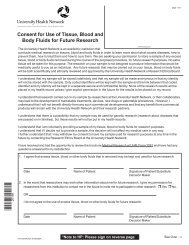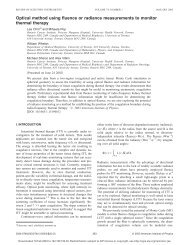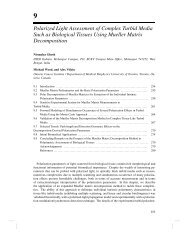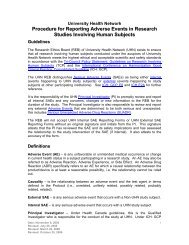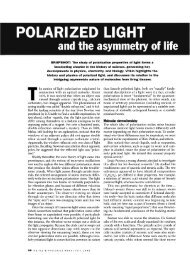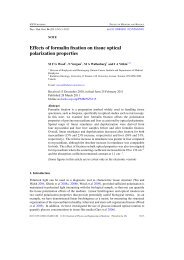Optical Fiber Sensors for Biomedical Applications
Optical Fiber Sensors for Biomedical Applications
Optical Fiber Sensors for Biomedical Applications
You also want an ePaper? Increase the reach of your titles
YUMPU automatically turns print PDFs into web optimized ePapers that Google loves.
676 L.C.L. Chin et al.An angled-tip with ∼10 ◦ angle can also be used to minimize specular reflection <strong>for</strong>light-scattering reflectance and/or OCT sensors.Typically, a side firing fiber with an NA of 0.22 should be polished at anangle >40 ◦ to ensure total internal reflection. For those light rays reflected at thesurface, the exiting beams will be further focused by the curvature of the core, muchlike a cylindrical lens.It is important to note that even if the fiber tip is polished at an angle exceedingthe angle of total internal reflection, a large portion of rays can still be refractedout the fiber tip. This is because the light traveling within the fiber carries a broadangular distribution such that not all rays can be internally reflected (recall discussionof fiber modes). In addition, when the surrounding environment is water ortissue, the total reflection capabilities of many side-firing tips (calculated with air asthe external medium) are lost. In such cases, a transparent shield can be positionedaround the tip to allow a surrounding air medium next to the tip, thus preserving itsside-firing properties.Alternatively, right angle micro prisms can be attached, using optical adhesive,to the end of a plain-cut fiber [5, 6]. Here, total internal reflection occurs at theprism’s hypotenuse to direct light to/from the fiber. One advantage of this approachis that the prisms can be coated with a thin layer of aluminum to increase theamount of light reflected at the prism hypotenuse (and to capture the off-axis raysthat are beyond the total internal reflection condition). Since aluminum is an efficientreflector over a broad range of wavelengths, Al-coated prisms are particularlyuseful to minimize light leakage in spectroscopic and fluorescence applications.However, the tips can be extremely fragile and typically require a surrounding glasscover to prevent the prisms from being unattached from the fiber during clinicalutilization.17.3.5 <strong>Fiber</strong> Tip ManufacturingThe majority of the specialized fiber tips described in this section are availablevia a number of commercial vendors, <strong>for</strong> example OZ Optics (www.ozoptics.com), Polymicro Technologies, (www.polymicro.com), and LaseOptics (www.laseoptics.com) among others (note that these company names are included <strong>for</strong> illustrativepurposes only, and in no way imply commercial endorsement by the authors)These vendors employ state of the art laser micro-machining equipment <strong>for</strong> sculptingtheir fiber tips. However, in-house approaches often offer a more economicaland quicker alternative to commercial vendors.Verdaasdonk and Borst [3] described a simple method <strong>for</strong> manufacturing ballshapedfiber tips using a high-temperature burner. Following stripping of the bufferand cladding, a standard silica fiber is exposed to a flame with local temperaturesexceeding 2000 ◦ C. As a result of the surface tension of the liquid silica, the meltedcore <strong>for</strong>ms a near spherical droplet that eventually solidifies into a ball-shaped tip.


